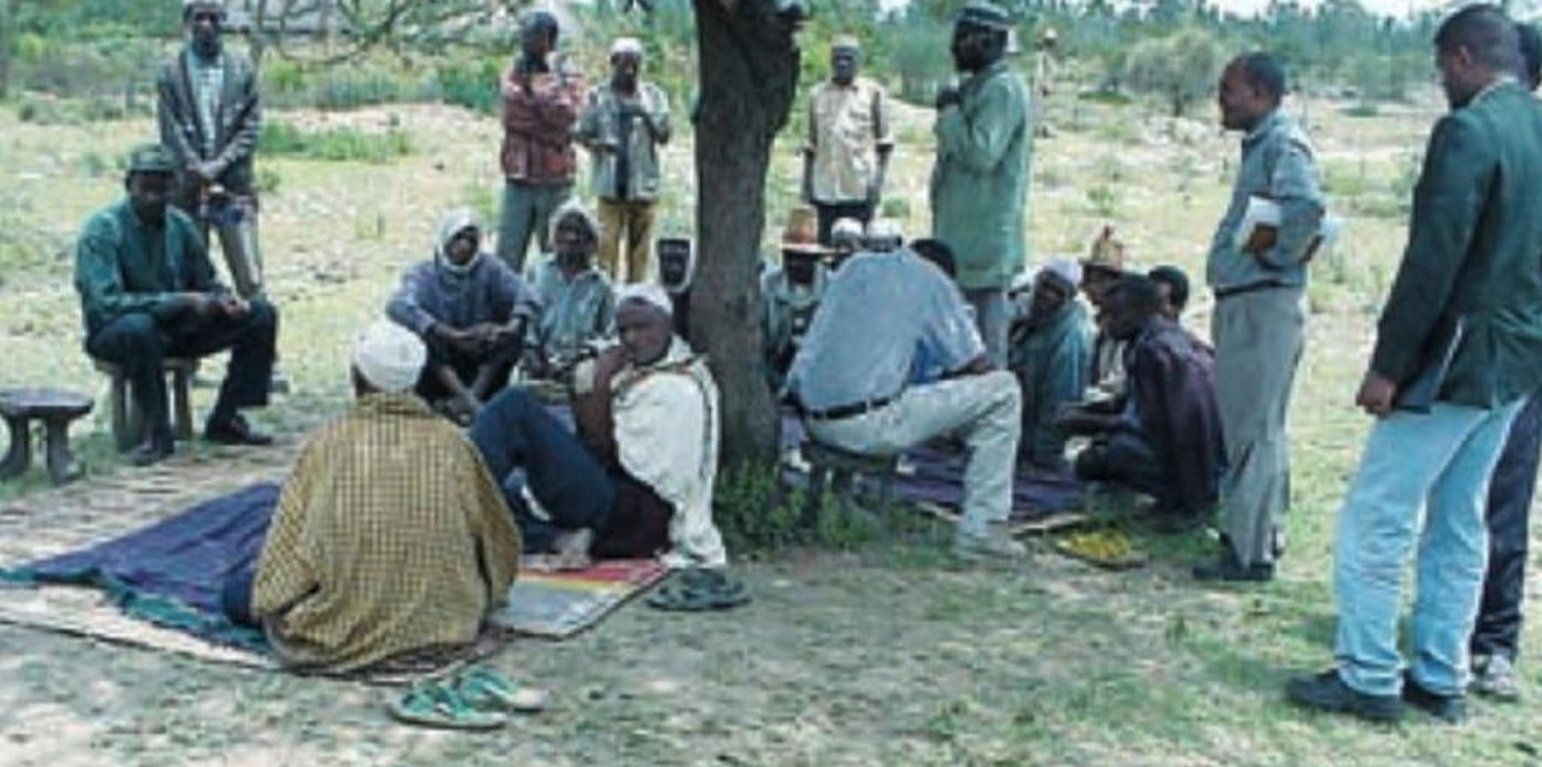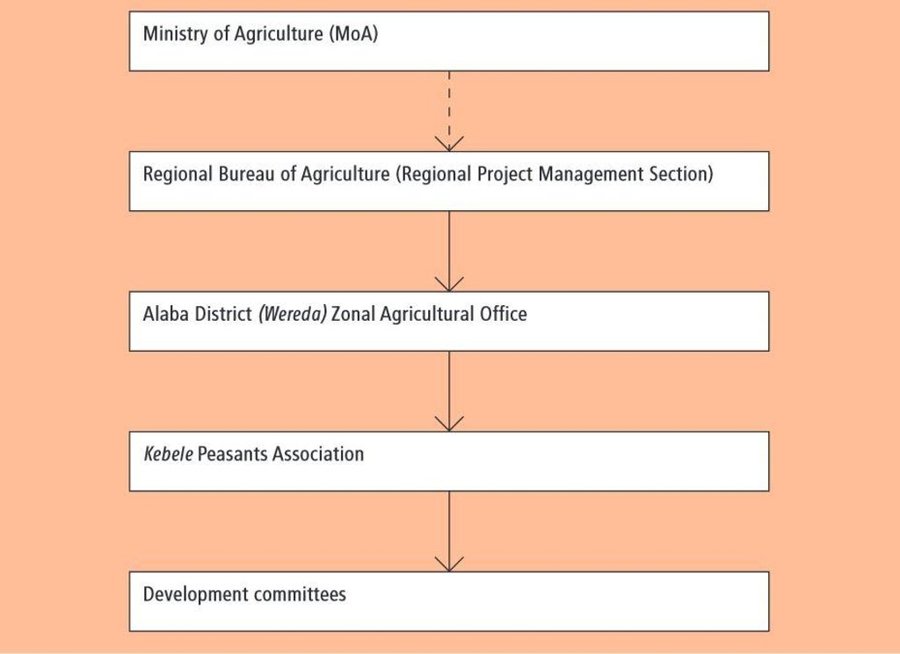Local level participatory planning approach
(أثيوبيا)
الوصف
An approach used by field staff to implement conservation activities, involving farmers in all stages of planning, implementation and evaluation.
Aims / objectives: The Local Level Participatory Planning Approach (LLPPA) starts with the selection of communities based on needs and problem assessment. Then development committees are formed, consisting of one or two technical staff and seven to eight farmers. They are elected by the community through a general assembly of land users.
Stages of implementation: The development committees plan and coordinate development activities. They first conduct a survey of the biophysical and socio-economic conditions of the area. Then problems are identified and prioritised with the community members through participatory rural appraisal (PRA). Land use analysis, followed by the definition of objectives, identification of development options and selection of appropriate SWC interventions, is carried out on a consultative basis. Targets for achievements are established, and resources and inputs are determined. Finally the development committee prepares a work plan. The plan for SWC activities is then submitted to the community leaders, and the approval of the plan is made by the general assembly of land users, in consultation with the technical field staff. The development committee is given the responsibility for organising implementation. The beneficiaries actively participate in this implementation, in maintenance and in utilisation of the assets created, by contributing their labour and resources. Whenever required technical field staff give technical advice during implementation of development activities - area closure for rehabilitation in this case. Participatory monitoring and evaluation of activities is another important element of the approach.
Role of stakeholders: The main purpose of LLPPA is to enhance farmers’ involvement in all steps of the development process, from the initial stages of planning, to implementation of the activities, and in the evaluation of the achievements. A good relationship between land users and field workers, and acceptance as well as support of the development activities by the land users are fundamental prerequisites for fruitful implementation and maintenance of SWC measures.
الموقع
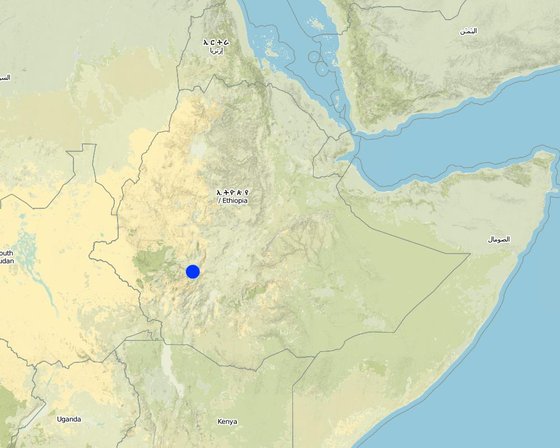
الموقع: South Ethiopia, Ethiopia, Alaba, أثيوبيا
المرجع الجغرافي للمواقع المختارة
تاريخ البدء: غير متاح
سنة الإنهاء: غير متاح
نوع النهج
-
تقليدي/أصلي
-
مبادرة محلية حديثة/مبتكرة
-
قائم على مشروع/برنامج
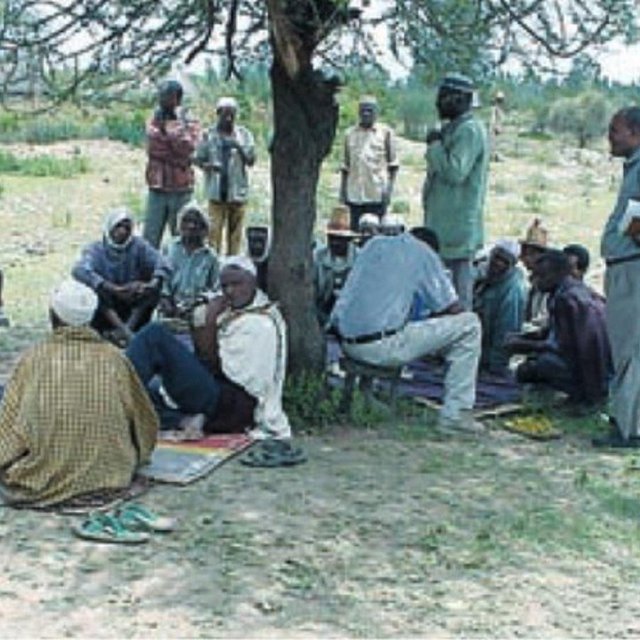
Participatory planning meeting underway in the community of Alaba, involving farmers and field technicians. (Daniel Danano)
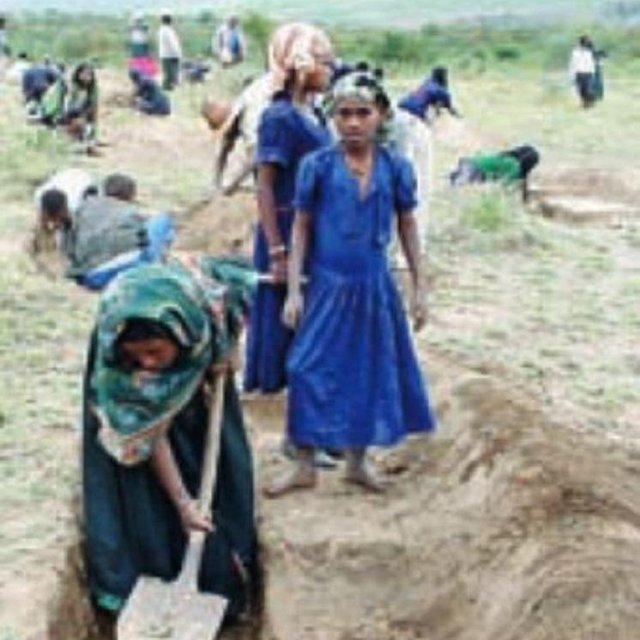
Field activities for area closure in Alaba: women's participation in the implementation phase is more than 50%, however decisions are principally taken by men. (Daniel Danano)
غايات النهج والبيئة المواتية
الغايات/الأهداف الرئيسية للنهج
- encourage the involvement of the beneficiary population and the technical personnel in the whole development process (ie initial planning, implementation, monitoring/evaluation) so that sustainable development, leading to improved living conditions is attained, - reduce land degradation (gully formation and landslides, sediment flow into downstream water harvesting and storage tanks) and enhance natural regeneration and fertility of soils in order to increase the productivity of degraded areas: provide livestock feed, fuel and construction wood, and higher crop yields
The SLM Approach addressed the following problems: Difficulties in attaining sustainable development through area closures for rehabilitation are due to: - lacking sense of ownership: land users feel that development attained in enclosures belongs to the government, - lack of awareness about land degradation problems, and the values of conservation measures, - reluctance to maintain activities and protect assets created, - shortage of livestock feed, fuelwood and construction material, - increasing land degradation problems (on- and off-site) due to improper land use and poor farming practices, - food insecurity and poverty
الشروط التي تمكن من تنفيذ التقنية/التقنيات المطبقة في إطار النهج
الظروف التي تعيق تنفيذ التقنية/التقنيات المطبقة في إطار النهج
-
توفر/الوصول إلى الموارد والخدمات المالية: Lack of financial resources: >90% of the community members are poor.
Treatment through the SLM Approach: Provision of hand tools by the project. Provide training to raise awareness about benefits.
-
الإطار القانوني (حيازة الأراضي، وحقوق استخدام الأراضي والمياه): Land tenure (land is state and public property)
Treatment through the SLM Approach: Assure land user rights and provide certificates
The existing land ownership, land use rights / water rights moderately hindered the approach implementation Area closures would provide better opportunities and advantages to the beneficiaries if hillsides were distributed to individual farmers, and if they were provided with user right certificates for the plots developed by them. In that case each farmer would give more attention to the protection and maintenance of assets developed.
-
المعرفة حول الإدارة المستدامة للأراضي، والوصول إلى الدعم الفني: 1) Cultivating steep slopes due to overpopulation and land subdivision (holdings of 0.25-0.5 ha/household).
2) Deforestation: illegal cutting of trees due to lack of fuel/construction wood, letting livestock into closed areas. Lack of management plans for planted trees.
3) Overgrazing of sloping lands resultng in severe gullies (on >50% of the land) and landslides. No controlled grazing
Treatment through the SLM Approach: 1) Apply appropriate land use practices according to land potential and apply SWC practices. Alternative income generation.
2) Training and awareness raising on how to assume responsibilities to protect the assets developed. Plant trees in woodlots and provide alternative energy sources (e.g. kerosene)
3) practise zero grazing, cut-and-carry and/or controlled grazing
-
غير ذلك: Lack of awareness: Lack of awareness about soil degradation and appropriate management practices.
Treatment through the SLM Approach: Awareness raising through training and awareness creation seminars.
مشاركة وأدوار الأطراف المعنية
الأطراف المعنية بالنهج وأدوارها
| ما هي الجهات المعنية / الكيانات المنفذة التي شاركت في النهج؟ |
حدد الأطراف المعنيين |
وصف أدوار الأطراف المعنية |
| مستخدمو الأراضي المحليون/المجتمعات المحلية |
|
In the approach area women's participation is more than 50% (and this is increasing) in the implementation of SWC measures. However, women are still not playing a sufficient role in decision making, due to cultural norms/values. |
| متخصصون في الإدارة المستدامة للأراضي / مستشارون زراعيون |
|
|
| الحكومة الوطنية (المخططون، صانعو القرار) |
|
|
| منظمة دولية |
|
|
انخراط مستخدمي الأراضي المحليين/المجتمعات المحلية في المراحل المختلفة للنهج
غير موجود
سلبي
الدعم الخارجي
تفاعلي
التعبئة الذاتية
المبادرة/التحفيز
self-motivation: few farmers take the initiative
التخطيط
initiated by technical staff, motivated by the development committee: identify problems, prioritise them and seek solutions
التنفيذ
community is responsible for implementation, some incentives are given for motivation: farmers are organised into working teams
الرصد/التقييم
initiated by extension agents, annual evaluation during community meeting
مخطط التدفق
The Regional Bureau of Agriculture provides the technical support and coordinates the programme at the regional level. It is linked but not directly accountable to MoA. The Zonal office participates in the monitoring and evaluation of the activities and also provides technical advice. Kebele is the lowest administrative unit formed of different villages. Several Kebeles make a Wereda. Development committees are assigned by the general assembly and comprise members from farmers/community and the development agents working in the area.
اتخاذ القرار بشأن اختيار تقنية الإدارة المستدامة للأراضي
وقد تم اتخاذ القرارات من قبل
-
مستخدمو الأراضي وحدهم (المبادرة الذاتية)
-
مستخدمو الأراضي بشكل أساسي، بدعم من متخصصي الإدارة المستدامة للأراضي
-
جميع الجهات الفاعلة ذات الصلة، كجزء من نهج تشاركي
-
متخصصون في الإدارة المستدامة للأراضي بشكل أساسي، بعد التشاور مع مستخدمي الأراضي
-
متخصصون في الإدارة المستدامة للأراضي بمفردهم
-
السياسيون / القادة
تم اتخاذ القرارات بناء على
-
تقييم المعرفة الموثقة جيدًا بشأن الإدارة المستدامة للأراضي(اتخاذ القرارات القائمة على الأدلة)
-
نتائج البحوث
-
خبرة وآراء شخصية(غير موثقة)
الدعم الفني وبناء القدرات وإدارة المعرفة
شكلت الأنشطة أو الخدمات التالية جزءًا من النهج
-
بناء القدرات/التدريب
-
خدمة استشارية
-
تعزيز المؤسسات (التطوير التنظيمي)
-
الرصد والتقييم
-
البحوث
بناء القدرات/التدريب
تم تقديم التدريب للأطراف المعنية التالية
-
مستخدمو الأراضي
-
موظفون ميدانيون/ مستشارون
شكل التدريب
-
في العمل
-
من مزارع إلى مزارع
-
مناطق العرض
-
اجتماعات عامة
-
دورات
المواضيع المغطاة
Extension workers and Wereda district SWC specialists are given regular training on LLPPA and area closure management. Community leaders and the development committee are trained every year on the various techniques of soil conservation. Two to three day awareness creation seminars are held for the community in general. The awareness creation programme played a significant role.
خدمة استشارية
تم تقديم الخدمة الاستشارية
-
في حقول مستخدمي الأراضي
-
في مراكز دائمة
Key elements: training, demonstration of the technology, provision of the necessary inputs for application
Advisory service is quite adequate to ensure the continuation of land conservation activities; The extension service has been adequate, due to support by MoA and donor agencies such as the World Food Programme.
تعزيز المؤسسات
تم تعزيز/إنشاء المؤسسات
-
لا
-
نعم، قليلا
-
نعم، باعتدال
-
نعم، إلى حد كبير
صف المؤسسة والأدوار والمسؤوليات والأعضاء وما إلى ذلك.
نوع الدعم
-
مالي
-
بناء القدرات/التدريب
-
معدات
مزيد من التفاصيل
الرصد والتقييم
bio-physical aspects were regular monitored through measurements; indicators: chane in slope, sediment trapped in ditch, soil depth, ground cover, amount of biomass, rate of regeneration of trees and shrubs, productivity of livestock, spring water discharge, soil loss, runoff
technical aspects were regular monitored through measurements; indicators: quality of structural measures, survival rate of planted trees
socio-cultural aspects were regular monitored through measurements; indicators: community participation in planning and implementation, trends in the participation of poor and rich farmers, womens' participation and decision making between men and women
economic / production aspects were regular monitored through measurements; indicators: amount of grass produced, household income from enclosures, availability and production of wood for fuel, increas in soil fertility
area treated aspects were regular monitored through measurements; indicators: area treated by structural and vegetative measures
no. of land users involved aspects were regular monitored through measurements; indicators: land users participating in planning, implementation and decision making
management of Approach aspects were regular monitored through measurements; indicators: number of land users participating in the implementation, land users participating in maintenance activities, type of activities undertaken on voluntary basis
There were few changes in the Approach as a result of monitoring and evaluation: As a result of monitoring and evaluation improvements in quality of micro-basins and/or trenches, for example, led to better attaining the standards of technology design initially proposed.
البحوث
تناول البحث المواضيع التالية
-
علم الاجتماع
-
الاقتصاد / التسويق
-
علم الايكولوجيا
-
تكنولوجيا
Very little work is done with regard to research in area closure and LLPPA.
التمويل والدعم المادي الخارجي
الميزانية السنوية بالدولار الأمريكي لمكون الإدارة المستدامة للأراضي
-
< 2000
-
10,0000-2,000
-
100,000-10,000
-
1,000000-100،000
-
> 1,000,000
Precise annual budget: غير متاح
Approach costs were met by the following donors: government (national): 10.0%; international non-government ((World Food Programme, WFP)): 40.0%; local community / land user(s) (-): 50.0%
تم تقديم الخدمات أو الحوافز التالية لمستخدمي الأراضي
-
الدعم المالي/المادي المقدم لمستخدمي الأراضي
-
إعانات لمدخلات محددة
-
الائتمان
-
حوافز أو وسائل أخرى
الدعم المالي/المادي المقدم لمستخدمي الأراضي
There is considerable support to local institutions: they get more money through selling trees and grass from enclosures, which in turn strengthens the institutions financially and socially. The development committee continues to exist after the project phases out. The same committee could take up other development issues.
العمل من قبل مستخدمي الأراضي كان
-
تطوعي
-
الغذاء مقابل العمل
-
مدفوع نقدا
-
مقابل دعم مادي آخر
تحليل الأثر والتصريحات الختامية
آثار النهج
لا
نعم، قليلا
نعم، باعتدال
نعم، إلى حد كبير
هل ساعد النهج مستخدمي الأراضي على تنفيذ وصيانة تقنيات الإدارة المستدامة للأراضي؟
Applied conservation measures in areas under closure considerably improve soil and water management, resulting in an increase in soil depth, ground cover, biomass, and in survival rates of planted trees and forage shrubs.
Did other land users / projects adopt the Approach?
There has been a high adoption rate (both with and without project support) of the approach as well as the technology - as can be observed in nearby communities.
المحفز الرئيسي لقيام مستخدمي الأراضي بتنفيذ الإدارة المستدامة للأراضي
استدامة أنشطة النهج
هل يمكن لمستخدمي الأراضي الحفاظ على استدامة ما تم تنفيذه من خلال النهج (بدون دعم خارجي)؟
Land users can continue without support - and are actually doing so where the support for area closure has already stopped.
الاستنتاجات والدروس المستفادة
نقاط القوة: وجهة نظر مستخدم الأرض
نقاط القوة: وجهة نظر جامع المعلومات أو غيره من الأشخاص الرئيسيين لمصدر المعلومات
-
Involvement of land users in decision making (How to sustain/ enhance this strength: More work on empowerment/land use rights.)
-
Encourages working in a team (How to sustain/ enhance this strength: Further strengthen team organisation.)
-
Application of appropriate land use practices contributing to sustainable development (How to sustain/ enhance this strength: Further improvement of productivity by encouraging land users to make maximum use of development achievements.)
-
Rapid benefits obtained: provision of livestock fodder (through cut-andcarry), fuel wood and construction material (How to sustain/ enhance this strength: Expand use of improved planting materials.)
نقاط الضعف / المساوىء / المخاطر: وجهة نظر مستخدم الأرضكيفية التغلب عليها
نقاط الضعف / المساوىء / المخاطر: وجهة نظر جامع المعلومات أو غيره من الأشخاص الرئيسيين لمصدر المعلوماتكيفية التغلب عليها
-
Dependence on incentives
Improve the methods of using incentives: incentives should be understood as a means for promoting participation rather than as a payment.
-
Low sense of ownership
Distribute the enclosures to individual land users.
-
The involvement of rich members of the community in the development committee is low
Development committee needs to be represented by different target groups.
-
Site guards are given incentives by the project
The community will have to assume this responsibility in future.
المراجع
المُراجع
-
Fabian Ottiger
-
Deborah Niggli
تاريخ التوثيق: 22 يناير، 2009
اخر تحديث: 4 إبريل، 2018
الأشخاص الرئيسيين لمصدر المعلومات
-
Daniel Danano (dale.daniel@fao.org) - متخصص في الإدارة المستدامة للأراضي
الوصف الكامل في قاعدة بيانات WOCAT
بيانات الإدارة المستدامة للأراضي المرتبطة
تم تسهيل التوثيق من قِبَل
المؤسسة
- Ministry of Agriculture and Natural Resources of Ethiopia (MoA) - أثيوبيا
المشروع
- Book project: where the land is greener - Case Studies and Analysis of Soil and Water Conservation Initiatives Worldwide (where the land is greener)
المراجع الرئيسية
-
Escobedo et al (1990) The minimum planning procedures for soil and water conservation in Ethiopia. Assistance to Soil: FAO
-
Voli C et al (1999) The Local Level Participatory Planning Approach for the soil and water conservation:
